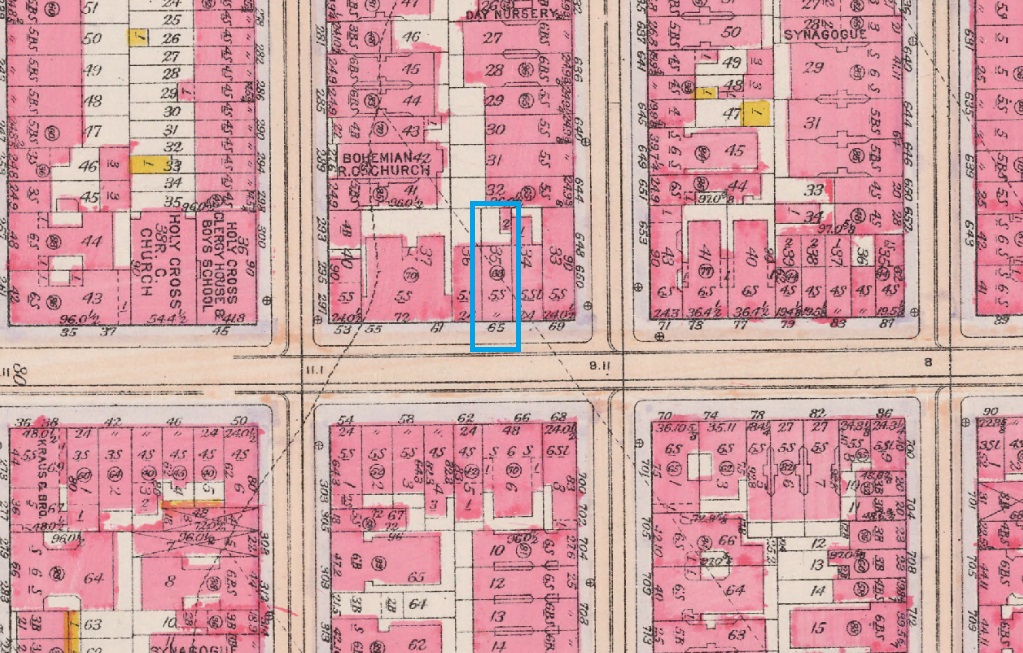What the Lower East Side Means to Me

The Lower East Side means many things to many people. Working as an architectural historian in New York City, it means a great deal to me. I always consider it a joy to travel the world and learn the history of places near and far, but New York has always been special to me because much of its history is my own.
Well, beginning in 1885, that is. That was the year the first of my ancestors moved to the United States. More specifically, it’s the year my great-great-grandparents Keva and Yetta came to the Lower East Side from Austria. Within a decade they had three sons, the youngest of which was my great-grandfather Henry, pictured at top left in the photo above. Keva was a rabbi, but, according to the 1910 U.S. Census, he worked in a factory as a tailor of cloaks and suits. His two older sons also worked in the garment industry. This is a particularly great bit of history for me because my favorite hobby is garment sewing. I only discovered this connection after I first picked up needle and thread.
Henry, at the time still in school, eventually married Hannah, pictured at bottom left in the photo above. Hannah was of German Jewish heritage. When they married in 1918, they lived in a five-story tenement at 65 Avenue C (between East 4th and 5th Streets). Their marriage announcement shows the address:

“Mestel” is a variation on the original Austrian last name, which I noticed changed depending on the year of the census record.
Unfortunately, the building no longer exists. That wasn’t going to stop me from finding out more, however! According to building documentation GVSHP has on file, the brick tenement was demolished in 1969 along with a neighboring tenement. The lot seems to have been vacant through the 1980s, based on the tax photo from that decade. It is now home to Kingdom Hall for Jehovah’s Witnesses, which also sits on two other lots.
While I can no longer see what the building looked like, I have been meaning to head down to the Municipal Archives to look through one of the city’s greatest treasures: tax photos of every lot in the five boroughs, taken between 1939 and 1941. If you want to do this for your own research, make sure to have the block and lot numbers of the building so you can look find the photo on microfilm.

I can do a bit more research to find the date of construction, but based on fire insurance maps available at the New York Public Library (with lots more available in their map room at 42nd and Fifth), I’m pretty sure it was built in 1868. In maps leading up to that year, a pottery building was located here, and in the 1868 Perris and Browne map the tenement footprint seems to be there. A clip of the 1916 Bromley map above shows what the neighborhood looked like just two years before my great-grandparents were married.
For a time, Henry drove a trolley with a route that ended around Abingdon Square. In tribute to the square (and perhaps because “A” would come up first in the telephone book), he soon after named his new business Abingdon Manufacturing Company, which made and installed window shades, blinds, awnings, etc.
When they had children in the 1920s, they left Manhattan for Brooklyn where my father’s side of the family would remain for decades. My grandmother, pictured on her wedding day in the top photo, met my grandfather in Brooklyn. He was the son of an English Jewish mother and a Russian Jewish father, who for a time boarded in a tenement on the Lower East Side and later found work as a bricklayer. What buildings do I walk by today that he may have helped build a century ago? And since he hardly knew any English, they communicated in Yiddish. I often wonder if he watched plays in the many Yiddish theaters that once lined Second Avenue.
That about wraps up my little contribution to Lower East Side History Month. Now make sure to go out and explore the many great histories of the neighborhood, whether it’s this month or those to come!
